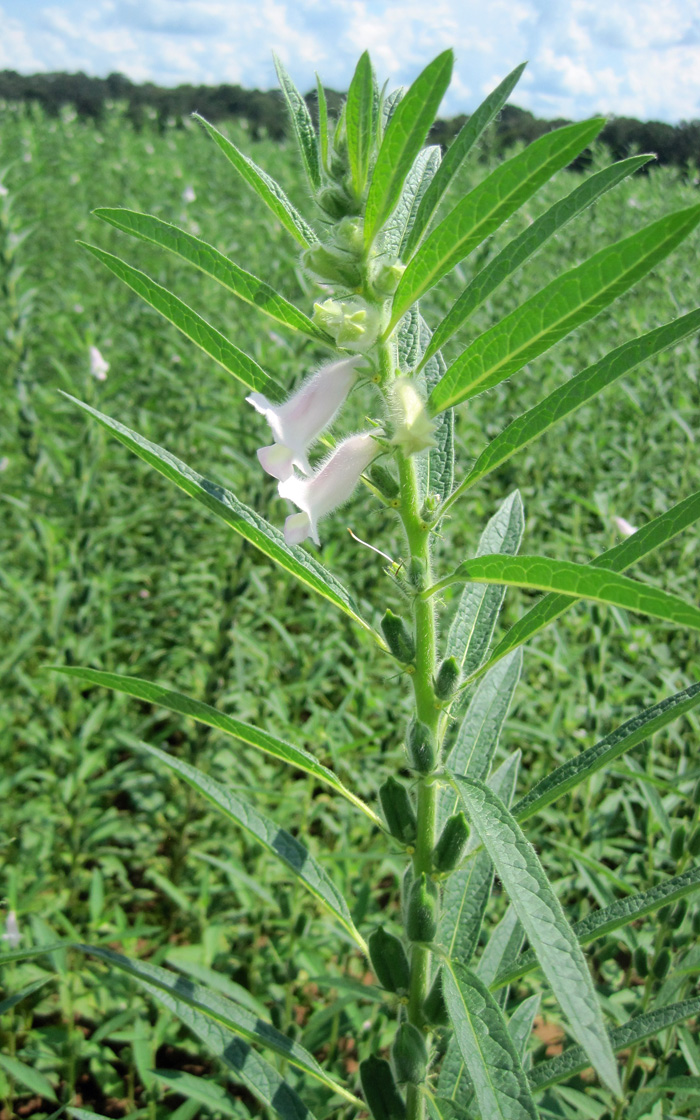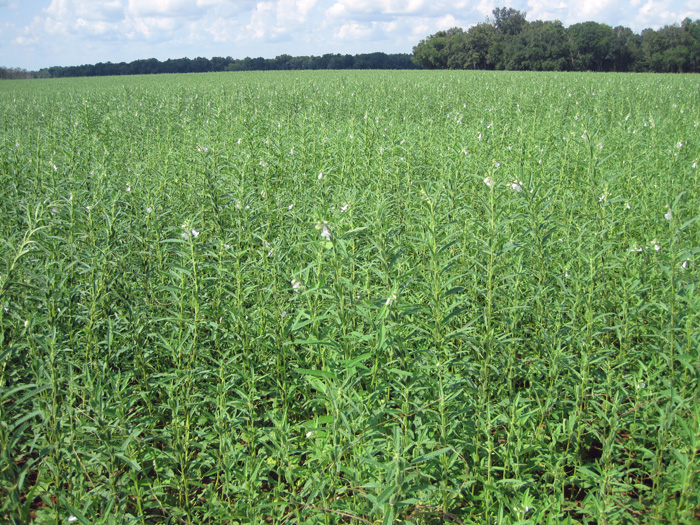For the past four years, Dr. Diane Rowland, a Crop Physiologist with the UF Agronomy Department, and Elena Toro, Agriculture Extension Agent in Suwannee County have been researching and working with growers on sesame production in Florida. In the U.S., sesame has traditionally been grown in Texas, Oklahoma, Kansas and Arkansas. It is marketed exclusively through the Sesaco Corporation out of Hobart, Oklahoma. Breeders in the Sesaco Corporation have developed the only non-shattering sesame varieties in the world that allow for sesame to be mechanically harvested. Even today, 99% of the sesame grown in the world is still harvested manually, because traditional sesame capsules shatter during the drying stage before harvest. Therefore, the Sesaco lines have an advantage because they can be mechanically harvested, so U.S. production is globally competitive. Sesame was first grown in the Southwestern U.S., because of its renowned drought tolerance. However, in the last five years, the devastating level of drought in the southwest has dropped yields, leading Sesaco to explore other U.S. production regions, including Florida.

Non-shattering sesame varieties allow for mechanical harvesting at the end of the season. Photo credit: Doug Mayo
Aside from drought tolerance, sesame offers other benefits including nematode resistance, pollinator diversity, and the potential to be an economically beneficial rotational crop in North Florida, where crop options are sometimes limited. After seeing the potential of the crop in UF/IFAS research trials since 2011, producers in the Live Oak area began growing sesame in 2013, with total commercial acreage reaching nearly 6,000 acres in 2014. Rowland and Toro, along with a graduate student Annie Couch have continued researching sesame in trials at the Plant Science Research and Education Unit in Citra, FL and the Suwannee Valley Agricultural Extension Center in Live Oak, FL. The trials have helped Extension agents and growers become familiar with different sesame varieties, planting configurations, irrigation needs, and nutrient partitioning. In 2013, there were nearly 1,000 acres of commercial sesame planted by 15 growers in the Suwannee Valley. The average yields for the two varieties grown were between 720-800 lbs per acre at a contract price of $0.42/ lb. In 2014, on the more than 6,000 acres planted in the Suwannee Valley, contract prices for irrigated sesame increased from $0.42 to $0.50/ lb.
There are still many questions to answer when it comes to sesame production, particularly in regards to weed control and possible disease pressure. There does seem to be a potential for sesame production in Florida, particularly in areas where rotational options are limited.
For more information on the specific practices recommended by Sesaco to grow sesame, download:
2012 Sesame Producer Guide
- Rapid Response Team Deployed to Investigate Peanut Collapse - September 21, 2018
- Developing a “Stress Breathalyzer” for Peanuts - April 13, 2018
- Peanut Nodule Analysis to Assess Crop Health - August 18, 2017


